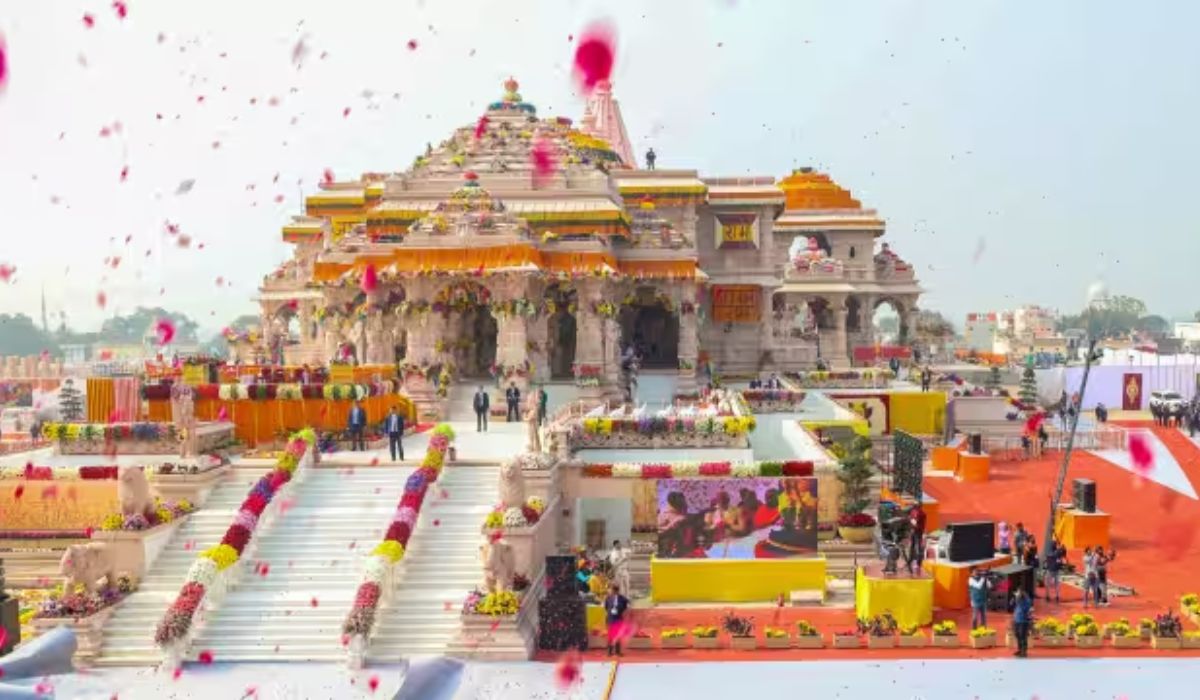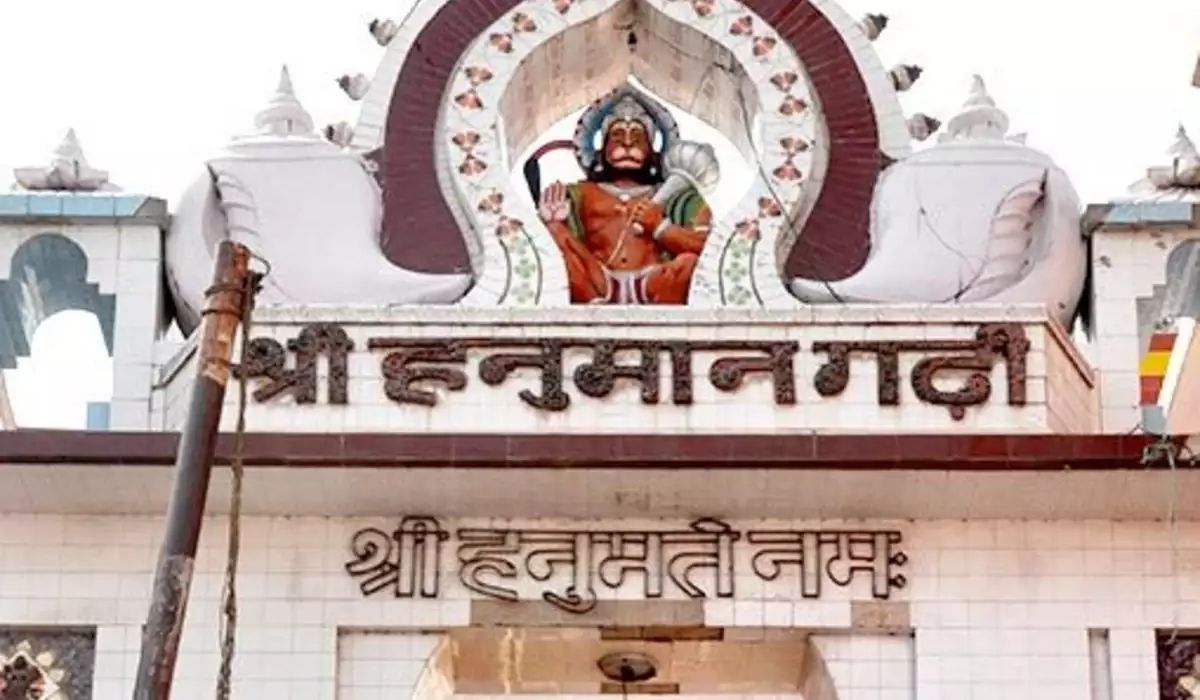In the vibrant city of Ayodhya, culture and celebration come together in a seamless fusion of traditions. This enchanting city, steeped in mythology and history, is an epitome of unity and diversity, where festivals unite people from various walks of life. From Diwali, the Festival of Lights, to Ram Navami, the birth celebration of Lord Rama, Ayodhya is a melting pot of festivities that showcases the rich cultural heritage of India.
Step into the narrow lanes adorned with colorful lights and witness the fervent energy that radiates from every nook and cranny. As the beats of traditional music fill the air, locals and tourists alike join in the merriment, soaking in the aura of this sacred land. The city’s ancient temples stand as testaments to its religious significance, providing a sanctuary for devotees to offer their prayers and seek blessings. Ayodhya truly embodies the spirit of unity, where people of diverse backgrounds come together to rejoice in the abundance of traditions that bind them.
Immerse yourself in this vibrant melange of culture and celebration, and experience the enchantment of Ayodhya – a city where festivals serve as a bridge between the past and the present, uniting hearts and minds in joy and harmony.

Also Read: Ram Janmabhoomi (Ayodhya): Unraveling the Threads of History and Faith
Historical and cultural significance of Ayodhya:
Ayodhya, located in the northern Indian state of Uttar Pradesh, holds immense historical and cultural significance. It is believed to be the birthplace of Lord Rama, one of the most revered deities in Hindu mythology. The city is mentioned in ancient scriptures and epics, including the Ramayana, which narrates the life and adventures of Lord Rama. Ayodhya’s rich heritage attracts pilgrims and history enthusiasts from all over the world, eager to explore its deep-rooted connection to Indian mythology.
The city’s historical importance extends beyond Hinduism, as Ayodhya has also been a significant place for Buddhism and Jainism. It is said to be the birthplace of five Tirthankaras (spiritual leaders) in Jainism and holds several Buddhist sites, including the Kanak Bhawan Temple, which is believed to be the palace of King Dasharatha, Lord Rama’s father. Ayodhya’s multicultural and multi-religious heritage adds to its allure as a destination where people can witness the confluence of diverse traditions.
Ayodhya’s cultural significance is not limited to its religious heritage. The city has been a center of art, music, and literature for centuries. It has been home to renowned poets, musicians, and scholars who have contributed to the development of Indian culture. The traditional art forms, such as Kathak dance and Hindustani classical music, find their roots in Ayodhya. The city’s rich cultural tapestry is woven into its festivals, which bring out the best of Ayodhya’s artistic and creative expressions.
Festivals celebrated in Ayodhya:
Ayodhya is renowned for its vibrant festivals that attract visitors from all corners of the globe. These festivals are a reflection of the city’s rich cultural heritage and are deeply rooted in religious traditions. Let’s explore some of the most prominent festivals celebrated in Ayodhya.
Ram Navami – The grand celebration of Lord Rama’s birth:
Ram Navami is one of the most significant festivals in Ayodhya, dedicated to the birth celebration of Lord Rama. This festival falls on the ninth day of the Hindu month of Chaitra, which usually falls in March or April. The entire city comes alive with elaborate decorations, processions, and religious ceremonies. Devotees visit the temples to offer prayers and seek blessings from Lord Rama. The highlight of the celebration is the grand procession known as “Ram Baraat,” where a beautifully adorned chariot carries the idols of Lord Rama and his consort, Sita, through the streets of Ayodhya. The atmosphere is filled with devotion and excitement as thousands of people join the procession, chanting hymns and singing devotional songs.
Diwali – The festival of lights in Ayodhya:
Diwali, also known as Deepavali, is celebrated with great fervor in Ayodhya. This festival, known as the “Festival of Lights,” signifies the victory of light over darkness and good over evil. The entire city is adorned with beautiful earthen lamps and colorful lights, creating a mesmerizing spectacle. The celebrations include fireworks, family gatherings, and the exchange of sweets and gifts. Ayodhya holds a special significance during Diwali as it is believed to be the place where Lord Rama returned to after his fourteen-year exile. The city becomes a beacon of light during this festival, attracting visitors who come to witness the grandeur and spirituality of the celebrations.
Holi – The vibrant colors of Ayodhya:
Holi, the festival of colors, is celebrated with immense enthusiasm in Ayodhya. This joyous festival marks the arrival of spring and is known for its exuberant celebrations with colored powders and water. The streets of Ayodhya are transformed into a riot of colors as people playfully smear each other with bright pigments. The festivities are accompanied by traditional music, dance, and delicious food. The vibrant and lively atmosphere of Ayodhya during Holi is a sight to behold, as people from all walks of life come together to celebrate the triumph of good over evil.
Hanuman Jayanti – Honoring Lord Hanuman in Ayodhya:
Hanuman Jayanti, the birth celebration of Lord Hanuman, is a significant festival in Ayodhya. Lord Hanuman, a revered deity in Hinduism, is known for his unwavering devotion to Lord Rama. On this day, devotees gather at the Hanuman temples in Ayodhya to offer prayers and seek the blessings of the monkey god. The festivities include special rituals, devotional songs, and the recitation of Hanuman Chalisa, a hymn dedicated to Lord Hanuman. The city resonates with the chants of “Jai Hanuman” as devotees come together to honor the beloved deity.

Also Read: Hanuman Garhi, Ayodhya: A Spiritual Haven in the Lap of Divinity
Other festivals celebrated in Ayodhya:
Apart from the major festivals mentioned above, Ayodhya celebrates a plethora of other festivals throughout the year. These include Navratri, Dussehra, Makar Sankranti, and Janmashtami, among others. Each festival has its unique rituals, traditions, and cultural significance. Ayodhya’s calendar is filled with festivities, making it a year-round destination for those seeking to immerse themselves in the rich tapestry of Indian culture.
Ayodhya as a tourist destination during festivals:
Ayodhya’s festivals attract a large number of tourists, both from India and abroad. The city becomes a hub of cultural exchange and exploration during these festive times. Visitors get a chance to witness the vibrant traditions, rituals, and customs that make Ayodhya a unique destination. The streets are lined with food vendors offering traditional delicacies, artisans showcasing their crafts, and performers entertaining the crowds with their artistic skills. The festival atmosphere creates a sense of joy and camaraderie, making it an unforgettable experience for tourists.
In addition to the festive celebrations, Ayodhya offers several attractions for tourists to explore. The city is home to numerous ancient temples, including the revered Ram Janmabhoomi, Hanuman Garhi, and Kanak Bhawan. These architectural marvels provide a glimpse into Ayodhya’s rich history and spiritual heritage. Visitors can also take a boat ride on the sacred Sarayu River or visit nearby attractions like Sita Rasoi and Bharat Mandir. Ayodhya’s serene and spiritual ambiance, coupled with the festivities, makes it an ideal destination for those seeking a deeper connection with Indian culture and traditions.
Conclusion: Ayodhya’s rich cultural heritage:
Ayodhya, with its historical and cultural significance, serves as a testament to the unity and diversity of India. The city’s festivals bring people from different backgrounds together, fostering a sense of communal harmony and celebration. Ayodhya’s deep-rooted connection to mythology, its vibrant traditions, and its welcoming spirit make it a unique destination for those seeking an immersive cultural experience. Whether it’s the grandeur of Ram Navami, the enchantment of Diwali, or the exuberance of Holi, Ayodhya’s festivals offer a glimpse into the rich tapestry of Indian culture, where unity and celebration intertwine in a vibrant melange.
Also Read: Gastronomic Delights of Varanasi: A Journey into the Vibrant Street Food
Experience the Cultural Extravaganza in Ayodhya: Join Us for a Vibrant Melange of Festivals, where Tradition and Celebration Unite! Discover the Rich Heritage and Joyous Spirit – Your Gateway to Ayodhya Awaits! 🎉 #AyodhyaFestivals #CulturalCelebration #ExploreAyodhya
FAQs for Ayodhya’s rich heritage:
What is the significance of Ayodhya in Indian culture and history?
Ayodhya is a city in the northern Indian state of Uttar Pradesh, known for its historical and cultural importance. It is believed to be the birthplace of Lord Rama, a revered deity in Hindu mythology. Ayodhya is mentioned in ancient scriptures like the Ramayana and has ties to Buddhism and Jainism, making it a multifaceted cultural and religious hub.
What festivals are celebrated in Ayodhya, and why are they significant?
Ayodhya celebrates a variety of festivals, including Ram Navami, Diwali, Holi, Hanuman Jayanti, Navratri, Dussehra, Makar Sankranti, and Janmashtami. These festivals hold religious and cultural significance, showcasing the rich tapestry of traditions in Ayodhya.
Tell us about Ram Navami and its celebrations in Ayodhya.
Ram Navami is a significant festival dedicated to the birth celebration of Lord Rama. Celebrated on the ninth day of the Hindu month of Chaitra, it involves elaborate decorations, religious ceremonies, and a grand procession called “Ram Baraat,” where idols of Lord Rama and Sita are carried through the streets of Ayodhya.
How is Diwali celebrated in Ayodhya, and what makes it special?
Diwali, the Festival of Lights, is celebrated with great fervor in Ayodhya. The city is adorned with lights, and festivities include fireworks, family gatherings, and the exchange of sweets and gifts. Ayodhya is believed to be the place where Lord Rama returned after his exile, adding spiritual significance to the celebrations.
What is the significance of Holi in Ayodhya, and how is it celebrated?
Holi, the festival of colors, is celebrated with enthusiasm in Ayodhya, marking the arrival of spring. Streets transform into a riot of colors as people playfully smear each other with colored powders. The festival includes traditional music, dance, and delicious food, creating a vibrant and lively atmosphere.
Tell us about Hanuman Jayanti and its celebrations in Ayodhya.
Hanuman Jayanti celebrates the birth of Lord Hanuman, a revered deity known for his devotion to Lord Rama. Devotees gather at Hanuman temples in Ayodhya for prayers, rituals, and the recitation of Hanuman Chalisa. The city resonates with chants of “Jai Hanuman” during the celebrations.
What makes Ayodhya a tourist destination during festivals?
Ayodhya attracts tourists during festivals due to its vibrant cultural exchange and exploration opportunities. Festive times offer a chance to witness unique traditions, rituals, and customs. Visitors can enjoy street food, artisan crafts, and cultural performances, enhancing their overall experience.
Apart from festivals, what attractions does Ayodhya offer to tourists?
Ayodhya is home to ancient temples such as Ram Janmabhoomi, Hanuman Garhi, and Kanak Bhawan. Tourists can explore these architectural marvels, take a boat ride on the Sarayu River, and visit nearby attractions like Sita Rasoi and Bharat Mandir, contributing to a holistic cultural and spiritual experience.
What is the overall cultural significance of Ayodhya?
Ayodhya, with its deep historical roots, diverse festivals, and welcoming spirit, symbolizes the unity and diversity of India. The city’s festivals bring people together, fostering communal harmony. Ayodhya’s connection to mythology, vibrant traditions, and cultural tapestry make it a unique destination for an immersive cultural experience.


0 Comment